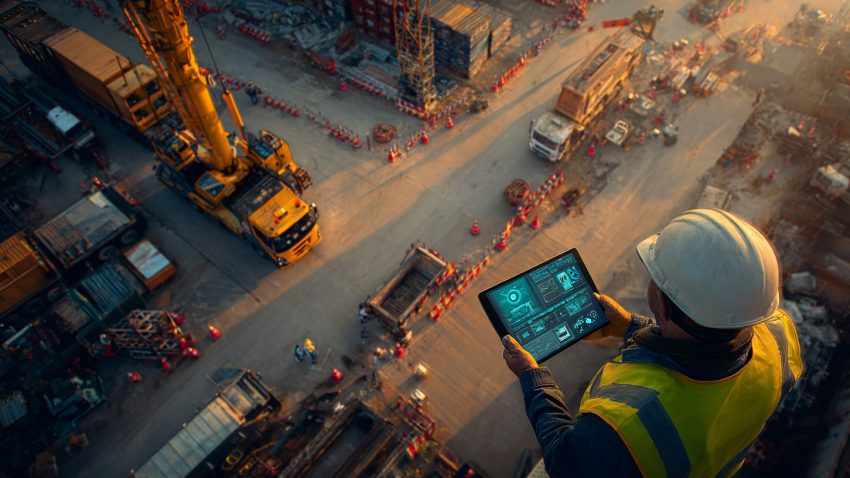Advantages of Digital Construction Processes: Real-World Case Studies
Table of Contents:

Digital Construction—More Than Just a Buzzword
Ever wondered how the term “digital construction” is changing the game in real, tangible ways? If you’re knee-deep in the construction world, you might be wondering if the digital age is actually making waves or if it’s all talk. I mean, can software really replace the hum of bulldozers, the clang of steel, and the grit of hands-on management? Well, you’re about to find out! In this article, we’re not just scratching the surface; we’re diving deep into the transformative power of digital construction processes. And hey, we’re not talking airy-fairy theories or hypothetical scenarios here. Nope! We’ve got cold, hard facts, substantiated by real-world case studies that shine a spotlight on the profound impacts of going digital.
So, you’ve heard the buzzwords—automation, real-time data, cloud-based solutions—and maybe even rolled your eyes a bit. I get it; the jargon can be overwhelming. But stick around, because we’re going to break down what these terms really mean when you’re out there on the site, hardhat on, overseeing a myriad of tasks that all seem to need your attention five minutes ago. From project management software that acts like your second-in-command, to data analytics that feel like a financial advisor, digital tools are increasingly becoming non-negotiable assets in the construction toolkit.
Digital construction is not just a concept; it’s a multi-faceted approach that touches every aspect of your project. Think of it as your Swiss Army knife for the construction industry. Need to tweak your project timeline in real-time because of a sudden materials delay? There’s a digital tool for that. Worried about staying within budget without compromising quality? Digital budget trackers have got your back. Concerned about the safety protocols on your site? Digital checklists and monitoring can ensure no detail slips through the cracks.
And let’s not forget the environment! At a time when sustainability is more than just a trendy catchphrase, digital construction methods are leading the way in reducing waste and optimizing energy use. Whether it’s through precise calculations that minimize material waste or through smart tech that helps you manage your resources more efficiently, going digital is increasingly synonymous with going green.
To really hammer it home, we’ve lined up some compelling case studies that demonstrate the monumental shifts that can occur when you embrace digital construction processes. We’re talking about projects that not only met but exceeded expectations, delivering exceptional results in terms of efficiency, cost, safety, and sustainability. So if you’re ready to move beyond skepticism and get a first-hand look at how the digital revolution is reshaping the landscape of the construction industry, you’re in the perfect place. Hold onto your hardhats, folks, because we’re about to take a thrilling ride into the smart, fast, and incredibly efficient world of digital construction!
The Game-Changing Benefits: Illustrated with Case Studies
1. Increased Efficiency: The Skyscraper That Was Built in Record Time
Get More Done, Faster: A real-world example that stands out is the construction of a 57-story skyscraper in China that was completed in just 19 days. Digital construction management software was integral to this feat, streamlining tasks and enabling real-time adjustments.
2. Cost Savings: The Bridge Built Under Budget
Every Penny Counts: The San Francisco-Oakland Bay Bridge retrofit came in $300 million under budget, thanks in part to digital simulation and real-time cost tracking.
3. Enhanced Safety: Minimizing Accidents on a Large-Scale Project
Safety First: On a complex tunnel project in Norway, implementing digital safety checks led to a 20% reduction in worksite accidents.
4. Improved Collaboration: When Engineers and Architects Speak the Same Language
Teamwork Makes the Dream Work: For the renovation of an old theater in London, cloud-based collaboration tools allowed engineers and architects to coordinate seamlessly, eliminating misunderstandings that could have delayed the project.
5. Sustainability: Building the Green Way
Good for the Planet, Good for the Wallet: A residential project in Sweden used digital tools to optimize the use of sustainable materials, ultimately achieving a 30% reduction in its carbon footprint.

StruxHub
Discover how StruxHub can revolutionize your construction management. Contact us today!
Adopting Digital Processes: A Guided Path
1. Training and Onboarding
Empower Your Team: Make sure everyone is trained to use digital tools, not just the tech-savvy among you.
2. Choose the Right Tools
Fit for Purpose: With myriad options available, go for digital solutions that fit the specific needs and scale of your project.
3. Be Open to Change
Adapt and Evolve: Digital processes will likely require you to rethink established workflows, but the gains are worth it.
4. Data-Driven Decisions
Let the Numbers Guide You: Make the most of the analytics and reporting tools to make informed decisions.
5. Iterate
Continuous Improvement: Digital tools allow for ongoing optimization; make tweaks based on data and feedback.

StruxHub
Discover how StruxHub can revolutionize your construction management. Contact us today!
A Digital Future Awaits
So, there you have it! From record-breaking skyscrapers to under-budget bridges, the advantages of digital construction processes are clear and proven. This isn’t just industry jargon or buzzword fluff; these are real benefits, confirmed by real-world case studies. As the industry moves inexorably toward a digital future, now’s the time to get onboard. Digital construction is not the future; it’s the present. And it’s awesome. Catch you on the next build
StruxHub is a construction project management software that helps you manage projects from start to finish. It offers features like task management, document management, and communication tools. StruxHub can help you save time and money, improve communication, collaboration, and decision-making.
To learn more about how StruxHub can streamline your construction management processes, request a demo today. By completing our form, you’ll hear from our team soon to discuss how StruxHub can help you:
- Schedule construction material deliveries with your trades
- Coordinate construction site resources and on-site logistics
- Digitize work permits and inspection forms
- Communicate and track P6 and Excel schedules
- Broadcast announcements to all construction workers
Don’t miss out on the opportunity to optimize your construction management processes with StruxHub. Sign up for a free demo today.


